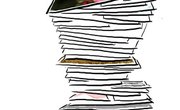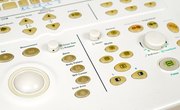An assessment is a diagnostic process that measures an individual’s behaviors, motivators, attitudes and competencies. Assessment tools comprise various instruments and procedures. These tools are largely used in educational institutions, nonprofit organizations and in corporate settings. The success of designing and developing assessment tools is brought about by using scientific methods.
Developing Assessment Tools
In developing assessment instruments, the candidates to be assessed should always be kept in mind at each step of the process. Different scenarios to be assessed call for different tools and modes of evaluation. Ensure that the instruments and procedures for assessing are relevant to the audience, the skills and the task for which they are being evaluated.
Setting Assessment Benchmarks
A benchmark is an assessment standard or a set of standards that is used as a point of reference for evaluating performance or a level of quality. When creating the related benchmark, take into account all the factors, attributes and competencies that to be measured and improve upon. Ensure that the benchmarks established are specific and operational to the assessment. Operational benchmarks will also help you carry out realistic improvements after the assessment is completed.
Establishing Evidence Gathering Methods
Next, establish the assessment methods for gathering the related evidence. Assessment tools are functional only to the extent that they are able to gather cognitive, behavioral and statistical outputs of those being assessed. Consider designing a tool that clearly indicates the competencies, skills, attributes and behaviors of candidates against the benchmarks. These specific tools may include comprehensive questionnaires like a SWOT (Strength, Weakness, Opportunities and Threats) analysis and specific diagnostic models.
Adhering to Assessment Principles
Adhere to the principles of assessment, which include the following: validity, reliability, flexibility and fairness. Validity is the extent to which evidence gathered can be supported from the design assessment tools. Reliability follows as the consistency that tools used for one set of candidates can be used to assess other candidates of the same competencies and generate the same results. Flexibility allows assessment candidates ample time to understand the terms of the assessment. Finally, the element of fairness means criteria should not discriminate against an individual or group of candidate.
Establishing Assessment Evaluation Method
Within the developing assessment tools model process, establish a method for assessing and evaluating outcomes against the benchmarks. Effective assessment tools should be able to interpret the outcome of the measurements and data taken during the assessment. Depending on the purpose of the assessment, consider using the three major forms of evaluation: goal-based, outcome-based and process-based.









